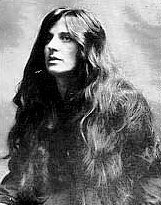South Pole Widow

Lady Kennet, sculptor and widow of polar explorer Robert Falcon Scott was born Kathleen Bruce on this day in 1878 in Carlton-in-Lindrick, Nottinghamshire, England.
Perhaps no English woman of her time found herself as much in the way of fascinating circumstances in which to live as Kathleen Bruce, and few lived with as much gusto. Convent-educated after the death of her parents by the time she was 8, Kathleen went to Paris to study art when she was 23. She first immersed herself in painting, inspired by the work of Augustus John, but later took up sculpture, ultimately earning the right to be addressed by the great Rodin as "colleague."
She took a detour in 1903, joining a Macedonian relief expedition until illness forced her back to England, where she met and fell in love with the dashing explorer Con Scott. The attraction was instantly mutual, as Scott fell prey to the fiery young woman's "rare smile" and vivid blue eyes. In the months before and after their marriage in September 1908, she was an enthusiastic supporter of Con's decision to conquer the South Pole, and after the birth of their son Peter (named after Peter Pan, the creation of Peter's godfather James Barrie), Kathleen and Con Scott sailed to Australia, where she met (but did not get along well with) the timid wives of Con's expedition mates. "If Con ever has another expedition," Kathleen wrote, "the wives must be chosen more carefully than the men -- better still, have none."
She was waiting for Con's return in New Zealand in April 1913 when word came that Con and his men had perished. Although deeply anguished, she refused to be conquered by her grief, but bore her loss, as she wrote, with gratitude for the time she had with Con Scott. Soon thereafter, she returned to sculpting by forging her masterpiece, a memorial to her husband at Waterloo Place in London.
During World War I she helped to establish an ambulance service and worked as a factory hand in an armament factory. In 1922, she married Lt. Commander Edward Young (later Baron Kennet), and spent much of the rest of her life sculpting famous men (including Asquith, Lloyd George and Yeats), working charity and relief efforts, and completing her memoirs. She died on July 25, 1947 in London.
"No happier woman ever lived." -- Lady Kennet.
Labels: Exploration, Painting and Sculpture, South Pole, Trailblazing Women





0 Comments:
Post a Comment
Subscribe to Post Comments [Atom]
<< Home